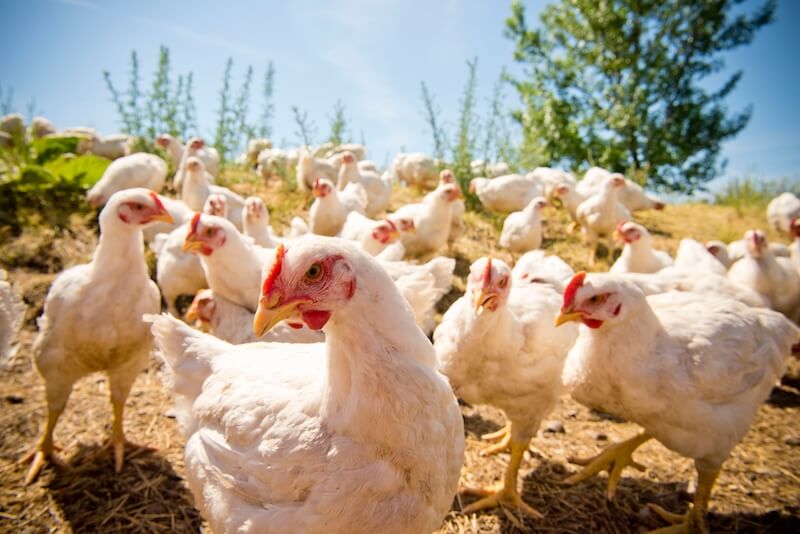Chicken Farming Undergoes A Radical Shift: The Rise Of Cell-Cultivated Meat

By R. Jason Newsom, MD, MPH
Following in his father’s footsteps, my son is a third-year medical student and by the time he completes his training, cell-cultivated chicken meat may be replacing meat from slaughtered birds. My home state of Alabama is one of the top chicken-producing states, but in the future, poultry production may take place in stainless steel tanks, rather than chicken coops.
Federal regulators recently green-lighted the sale of cell-cultivated chicken meat, and people can sample it at a restaurant in San Francisco, Barr Crenn, and one in Washington DC owned by chef Jose Andres.
It’s not a health food, but if chicken meat is grown in a sterile environment with cells from living birds, there’s a clear food safety advantage. Foodborne illness from poultry threatens human health as slaughtered raw chicken can be contaminated with dangerous pathogens, including Campylobacter, Salmonella, or Clostridium perfringens.
And, to be fair, cell-cultivated meat generates less water pollution than large-scale livestock operations. As a longtime Gulf Coast resident, I like to imagine a future where there’s no waste from massive chicken farms flowing to the Gulf of Mexico and creating dead zones.
News traveled fast when, at a recent meeting, and delegates passed a resolution stating that large-scale livestock operations, including chicken farms, “may be a public health hazard” and calling for the Environmental Protection Agency and appropriate parties to tighten restrictions on pollution from these operations.
Cell-cultivated meat offers many advantages, but as a physician focused on preventive medicine and public health, I recommend getting your protein from plant sources like lentils and black-eyed peas. A whole foods plant-based diet can help people improve insulin sensitivity, lower blood pressure, and maintain a healthy weight among other benefits.
Fruits, veggies, and beans are high in fiber, and according to a recent study, increasing your intake of fiber can boost brain function. Veggies keep you sharp as you age.
If a patient asks me to recommend a meat alternative that offers a rich, meaty taste and lots of protein, I might recommend putting some portobello mushrooms on the grill. A recently published scientific review notes that mushrooms provide high-quality protein at an affordable price. Interestingly, former chicken houses can be converted to facilities for growing mushrooms, hydroponic lettuce, and other crops. Craig Watts in North Carolina raised chickens for Perdue for many years, but now he’s growing mushrooms.
Meanwhile, plant scientists are tinkering with our most familiar fruits and melons and developing new varieties that can better adapt to a changing climate. The Cosmic Crisp is a new apple variety that is heat tolerant. The avocado is one of nature’s most perfect foods, and scientists have developed a new variety that provides more food with less land and water.
All trees, including commercially grown apple and avocado trees, do more than provide food — they provide oxygen for us to breathe while storing carbon dioxide in their fibers. Apples, peaches, and other fruits are not only sweet but eating fruit daily decreases your risk for Type 2 diabetes.
The world of food production is changing in many ways, with scientists growing meat in bioreactors, and creating new varieties of apples, and other crops that can thrive in a changing climate. During my long career in preventive medicine and public health, I’ve recommended a plant-based diet to help people achieve wellness, and my son will carry this forward into his own career in medicine. Many changes are afoot, but the apple doesn’t fall far from the tree.
R. Jason Newsom is an occupational health physician.
 Join/ Renew
Join/ Renew







